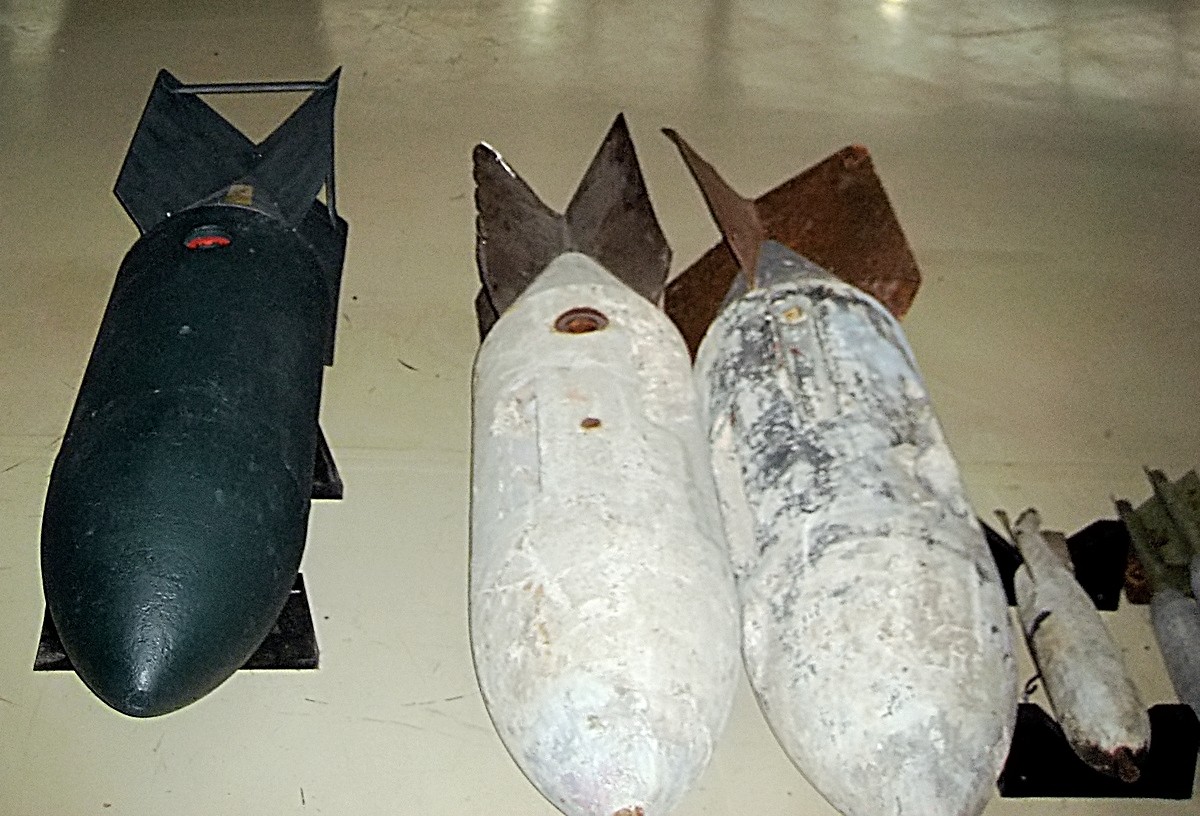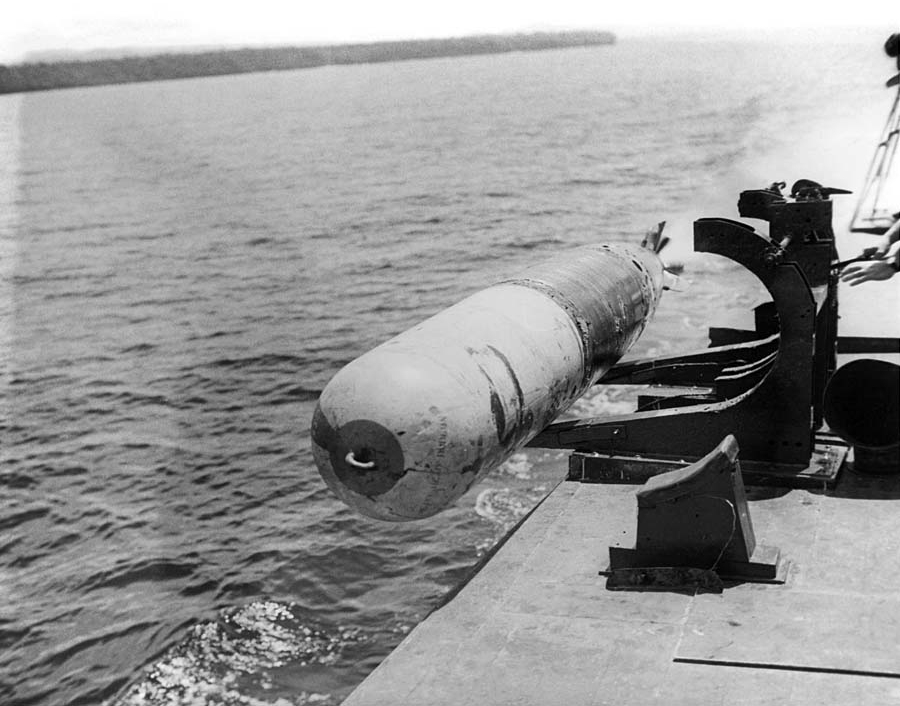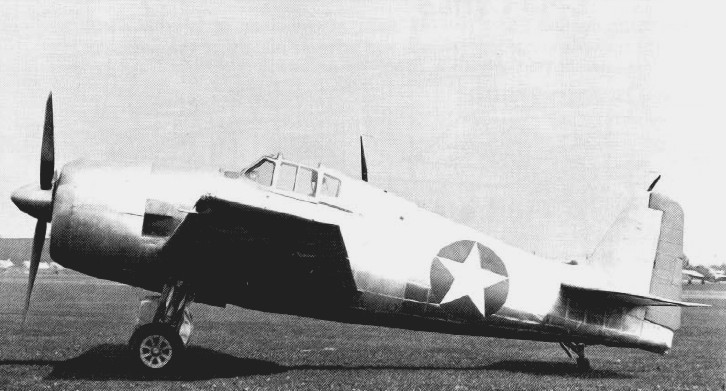|
Grumman TBF Avenger
The Grumman TBF Avenger (designated TBM for aircraft manufactured by General Motors) is an American World War II-era torpedo bomber developed initially for the United States Navy and Marine Corps, and eventually used by several air and naval aviation services around the world. The Avenger entered U.S. service in 1942, and first saw action during the Battle of Midway. Despite the loss of five of the six Avengers on its combat debut, it survived in service to become the most effective and widely-used torpedo bomber of World War II, sharing credit for sinking the super-battleships and (the only ships of that type sunk exclusively by American aircraft while under way) and being credited for sinking 30 submarines. Greatly modified after the war, it remained in use until the 1960s.Wheeler 1992, p. 53. Design and development The Douglas TBD Devastator, the U.S. Navy's main torpedo bomber introduced in 1935, was obsolescent by 1939. Bids were accepted from several companies, but G ... [...More Info...] [...Related Items...] OR: [Wikipedia] [Google] [Baidu] |
WikiProject Aircraft
A WikiProject, or Wikiproject, is a Wikimedia movement affinity group for contributors with shared goals. WikiProjects are prevalent within the largest wiki, Wikipedia, and exist to varying degrees within Wikimedia project, sister projects such as Wiktionary, Wikiquote, Wikidata, and Wikisource. They also exist in different languages, and translation of articles is a form of their collaboration. During the COVID-19 pandemic, CBS News noted the role of Wikipedia's WikiProject Medicine in maintaining the accuracy of articles related to the disease. Another WikiProject that has drawn attention is WikiProject Women Scientists, which was profiled by ''Smithsonian Magazine, Smithsonian'' for its efforts to improve coverage of women scientists which the profile noted had "helped increase the number of female scientists on Wikipedia from around 1,600 to over 5,000". On Wikipedia Some Wikipedia WikiProjects are substantial enough to engage in cooperative activities with outside organization ... [...More Info...] [...Related Items...] OR: [Wikipedia] [Google] [Baidu] |
Leroy Grumman
Leroy Randle "Roy" Grumman (4 January 1895 – 4 October 1982) was an American aeronautical engineer, test pilot, and industrialist. In 1929, he co-founded Grumman Aircraft Engineering Co., later renamed Grumman Aerospace Corporation, and now part of Northrop Grumman."The Embattled Farmers." ''Time'', 11 September 1944. Retrieved: 17 March 2009. Early life Grumman was born in . His forebears had Connecticut roots and owned a brewery. When he was a child, his father, George Tyson Grumman, owned and operated a carriage shop, and later worked for the post office.[...More Info...] [...Related Items...] OR: [Wikipedia] [Google] [Baidu] |
Aerial Bomb
An aerial bomb is a type of explosive or incendiary weapon intended to travel through the air on a predictable trajectory. Engineers usually develop such bombs to be dropped from an aircraft. The use of aerial bombs is termed aerial bombing. Bomb types Aerial bombs include a vast range and complexity of designs. These include unguided gravity bombs, guided bombs, bombs hand-tossed from a vehicle, bombs needing a large specially-built delivery-vehicle, bombs integrated with the vehicle itself (such as a glide bomb), instant-detonation bombs, or delay-action bombs. As with other types of explosive weapons, aerial bombs aim to kill and injure people or to destroy materiel through the projection of one or more of blast, fragmentation, radiation or fire outwards from the point of detonation. Early bombs The first bombs delivered to their targets by air were single bombs carried on unmanned hot air balloons, launched by the Austrians against Venice in 1849 during the Fir ... [...More Info...] [...Related Items...] OR: [Wikipedia] [Google] [Baidu] |
Mark 13 Torpedo
The Mark 13 torpedo was the U.S. Navy's most common aerial torpedo of World War II. It was the first American torpedo to be originally designed for launching from aircraft only. They were also used on PT boats. Design Originating in a 1925 design study, the Mark 13 was subject to changing USN requirements through its early years with resulting on-and-off development. Early models—even when dropped low to the water at slow speeds—were prone to running on the surface, or not running at all. By late 1944, the design had been modified to allow reliable drops from as high as , at speeds up to . The final Mark 13 weighed ; of this was the high explosive Torpex.NavWeaps (18 February 2005).USA Torpedoes of WWII. Retrieved 2 August 2005. The Mark 13 was designed with unusually squat dimensions for its type: diameter was and length . In the water, the Mark 13 could reach a speed of for up to . The Mark 13 ran slower than the Mark 14 torpedo, a characteristic which, alo ... [...More Info...] [...Related Items...] OR: [Wikipedia] [Google] [Baidu] |
M2 Browning
The M2 machine gun or Browning .50 caliber machine gun (informally, "Ma Deuce") is a heavy machine gun that was designed towards the end of World War I by John Browning. Its design is similar to Browning's earlier M1919 Browning machine gun, which was chambered for the .30-06 cartridge. The M2 uses Browning's larger and more powerful .50 BMG (12.7 mm) cartridge. The design has had many designations; the official U.S. military designation for the current infantry type is Browning Machine Gun, Cal. .50, M2, HB, Flexible. It is effective against infantry, unarmored or lightly armored vehicles and boats, light fortifications, and low-flying aircraft. The gun has been used extensively as a vehicle weapon and for aircraft armament by the United States since the 1930s. It was heavily used during World War II, the Korean War, the Vietnam War, the Falklands War, the Soviet–Afghan War, the Gulf War, the Iraq War, and the War in Afghanistan. It is the primary heavy machine gun of ... [...More Info...] [...Related Items...] OR: [Wikipedia] [Google] [Baidu] |
M1919 Browning Machine Gun
The M1919 Browning is a .30 caliber medium machine gun that was widely used during the 20th century, especially during World War II, the Korean War, and the Vietnam War. The M1919 saw service as a light infantry, coaxial, mounted, aircraft, and anti-aircraft machine gun by the U.S. and many other countries. The M1919 was an air-cooled development of the standard US machine gun of World War I, the John M. Browning-designed water-cooled M1917. The emergence of general-purpose machine guns in the 1950s pushed the M1919 into secondary roles in many cases, especially after the arrival of the M60 in US Army service. The United States Navy also converted many to 7.62 mm NATO, and designated them Mk 21 Mod 0; they were commonly used on riverine craft in the 1960s and 1970s in Vietnam. Many NATO countries also converted their examples to 7.62 mm caliber, and these remained in service well into the 1990s, as well as up to the present day in some countries. Operation Loading ... [...More Info...] [...Related Items...] OR: [Wikipedia] [Google] [Baidu] |
Synchronization Gear
A synchronization gear (also known as a gun synchronizer or interrupter gear) was a device enabling a single-engine tractor configuration aircraft to fire its forward-firing armament through the arc of its spinning propeller without bullets striking the blades. This allowed the aircraft, rather than the gun, to be aimed at the target. There were many practical problems, mostly arising from the inherently imprecise nature of an automatic gun's firing, the great (and varying) velocity of the blades of a spinning propeller, and the very high speed at which any gear synchronizing the two had to operate. In practice, all known gears worked on the principle of actively triggering each shot, in the manner of a semi-automatic weapon. Design and experimentation with gun synchronization had been underway in France and Germany in 1913–1914, following the ideas of August Euler, who seems to have been the first to suggest mounting a fixed armament firing in the direction of flight (in 191 ... [...More Info...] [...Related Items...] OR: [Wikipedia] [Google] [Baidu] |
Wright R-2600
The Wright R-2600 Cyclone 14 (also called Twin Cyclone) is an American radial engine developed by Curtiss-Wright and widely used in aircraft in the 1930s and 1940s. History In 1935, Curtiss-Wright began work on a more powerful version of their successful R-1820 Cyclone 9. The result was the R-2600 Twin Cyclone, with 14 cylinders arranged in two rows. The R-2600-3 was originally intended for the C-46 Commando (being fitted to the prototype CW-20A). It was also the original engine choice for the F6F Hellcat; a running change (one which would not stop production) for the CW-20A, and one in late April 1942 for the second XF6F-1, led to the adoption of the Pratt & Whitney R-2800 Double Wasp in the R-2600's place for both designs. The Twin Cyclone went on to power several important American World War II aircraft, including the A-20 Havoc, B-25 Mitchell, TBF Avenger, SB2C Helldiver, and the PBM Mariner. Over 50,000 R-2600s were built at plants in Paterson, New Jersey, and Cinc ... [...More Info...] [...Related Items...] OR: [Wikipedia] [Google] [Baidu] |
Aircraft Engine
An aircraft engine, often referred to as an aero engine, is the power component of an aircraft propulsion system. Most aircraft engines are either piston engines or gas turbines, although a few have been rocket powered and in recent years many small UAVs have used electric motors. Manufacturing industry In commercial aviation the major Western manufacturers of turbofan engines are Pratt & Whitney (a subsidiary of Raytheon Technologies), General Electric, Rolls-Royce, and CFM International (a joint venture of Safran Aircraft Engines and General Electric). Russian manufacturers include the United Engine Corporation, Aviadvigatel and Klimov. Aeroengine Corporation of China was formed in 2016 with the merger of several smaller companies. The largest manufacturer of turboprop engines for general aviation is Pratt & Whitney. General Electric announced in 2015 entrance into the market. Development history * 1848: John Stringfellow made a steam engine for a 10-foot ... [...More Info...] [...Related Items...] OR: [Wikipedia] [Google] [Baidu] |
Grumman F6F Hellcat
The Grumman F6F Hellcat is an American carrier-based fighter aircraft of World War II. Designed to replace the earlier F4F Wildcat and to counter the Japanese Mitsubishi A6M Zero, it was the United States Navy's dominant fighter in the second half of the Pacific War. In gaining that role, it prevailed over its faster competitor, the Vought F4U Corsair, which initially had problems with visibility and carrier landings. Powered by a Pratt & Whitney R-2800 Double Wasp, the same powerplant used for both the Corsair and the United States Army Air Forces (USAAF) Republic P-47 Thunderbolt fighters, the F6F was an entirely new design, but it still resembled the Wildcat in many ways. Some military observers tagged the Hellcat as the "Wildcat's big brother".Sullivan 1979, p. 4. The F6F made its combat debut in September 1943. It subsequently established itself as a rugged, well-designed carrier fighter, which was able to outperform the A6M Zero and help secure air superiority over ... [...More Info...] [...Related Items...] OR: [Wikipedia] [Google] [Baidu] |
Republic P-47 Thunderbolt
The Republic P-47 Thunderbolt is a World War II-era fighter aircraft produced by the American company Republic Aviation from 1941 through 1945. It was a successful high-altitude fighter and it also served as the foremost American fighter-bomber in the ground-attack role. Its primary armament was eight .50-caliber machine guns, and it could carry 5-inch rockets or a bomb load of . When fully loaded, the P-47 weighed up to 8 tons, making it one of the heaviest fighters of the war. The Thunderbolt was effective as a short-to medium-range escort fighter in high-altitude air-to-air combat and ground attack in both the European and Pacific theaters. The P-47 was designed around the powerful Pratt & Whitney R-2800 Double Wasp 18-cylinder radial engine, which also powered two U.S. Navy/U.S. Marine Corps fighters, the Grumman F6F Hellcat and the Vought F4U Corsair. An advanced turbosupercharger system ensured the aircraft's eventual dominance at high altitudes, while also ... [...More Info...] [...Related Items...] OR: [Wikipedia] [Google] [Baidu] |
TBF Mid1942
TBF can refer to: *Tert-butyl formate, an organic chemical compound with molecular formula C5H10O2 *Grumman TBF Avenger, a World War II torpedo bomber *Tingle's Balloon Fight, a game for the Nintendo DS *The Beat Fleet, Croatian rap group *The Black Fish, an international marine conservation organisation *To be fair, internet slang *Token bucket filter *Total Batters Faced, a baseball statistic *Türkiye Bisiklet Federasyonu *Turkish Basketball Federation The Turkish Basketball Federation ( tr, Türkiye Basketbol Federasyonu, TBF) is the national federation for basketball in Turkey. It is headquartered in Istanbul. They organize the Basketball Super League, the Turkish Basketball Cup and the Tur ... * Turkish Bridge Federation {{disambig ... [...More Info...] [...Related Items...] OR: [Wikipedia] [Google] [Baidu] |




.jpg)


